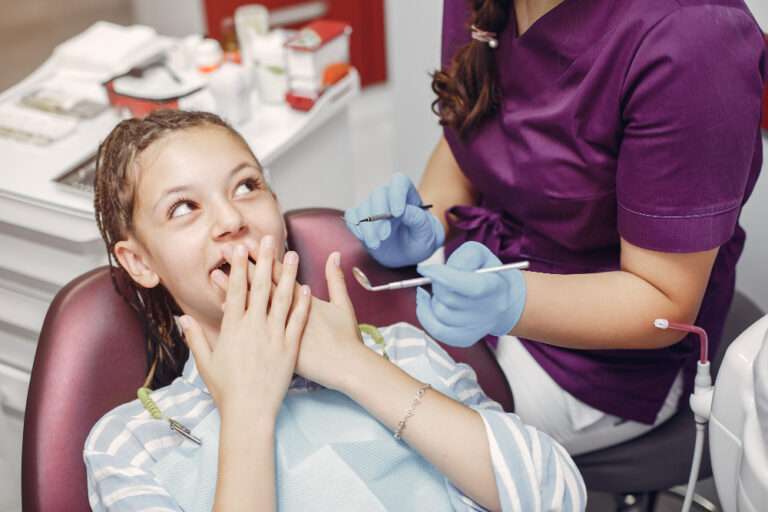Dental trauma in children
Dental trauma in children refers to injuries or damage to the teeth, gums, or surrounding oral tissues that result from accidents, falls, or other traumatic events. Dental injuries can vary in severity and may require different levels of care and intervention. Prompt evaluation and treatment are essential to minimize potential long-term complications. Here are key points about dental trauma in children:
- Types of Dental Trauma:
- Dental trauma can involve various types of injuries, including:
- Tooth Fractures: Teeth can chip, crack, or break, either partially or completely.
- Tooth Displacement: The tooth may be pushed out of its normal position (extrusion) or pushed further into the socket (intrusion).
- Tooth Avulsion: Complete loss of a tooth from its socket is known as avulsion.
- Gum Injuries: Trauma can also affect the gums, causing lacerations or other damage.
- Dental trauma can involve various types of injuries, including:
- Causes:
- Immediate Response:
- In the event of dental trauma, it’s important for parents or caregivers to take the following immediate actions:
- Rinse the injured area gently with clean water if it’s dirty.
- For avulsed (knocked-out) teeth, handle the tooth by the crown (top) and avoid touching the root.
- Attempt to reinsert an avulsed permanent tooth gently into the socket, if possible. If not, place it in a clean container with milk or a tooth preservation solution. Do not use water.
- Contact a dentist or seek emergency dental care immediately.
- For fractured teeth or other injuries, provide appropriate pain relief (acetaminophen or ibuprofen as directed) and apply a cold compress to reduce swelling.
- In the event of dental trauma, it’s important for parents or caregivers to take the following immediate actions:
- Dental Evaluation and Treatment:
- A dental professional will assess the extent of the injury, which may involve X-rays and clinical examination.
- Treatment options depend on the type and severity of the injury and may include:
- Bonding, fillings, or crowns for fractured teeth.
- Repositioning and splinting for displaced teeth.
- Replantation or other interventions for avulsed teeth.
- Suturing for gum injuries.
- Antibiotics or tetanus shots, if necessary.
- Follow-up appointments to monitor healing and assess the need for long-term interventions, such as root canal treatment.
- Prognosis:
- The prognosis for dental trauma in children depends on the nature and extent of the injury, as well as the promptness of treatment.
- Timely and appropriate care can often save teeth and prevent complications.
- In some cases, the long-term impact may include aesthetic and functional concerns, which can be addressed through restorative and cosmetic dentistry as the child grows.
- Prevention:
Parents and caregivers should prioritize dental safety and be prepared to respond to dental trauma promptly. Seeking immediate dental care is essential to minimize potential complications and ensure the best possible outcome for a child’s dental health.
------------From our Sponsors------------









